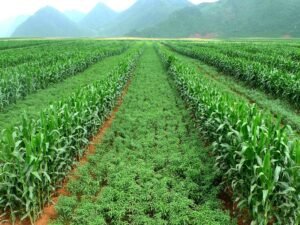Best Methods To convert Your Farm Into Organic Farm
With rapid increase in technology & research, there has always been a need for something beneficial which would not harm the crops or the humans consuming it. Farmers often use fertilizers and pesticides for growing the crops efficiently and reducing pests which reduces the fertility of the soil making it less productive and somehow it also destroys the ecosystem by polluting the soil, water and air. There is a huge demand for such foods which ensures safety and health of consumers and thus it has initiated the need of organic products to promote sustainable development.
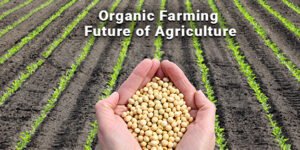
The demand of organic products has led to Organic farming which has a number of benefits and is inexpensive too. Due to this, many farmers are now converting their farms into Organic farming. So, we need to know the proper and best methods to convert our farms which we are going to discuss in this article.
Firstly we will discuss some basic information about Organic Farming.
What is Organic Farming?
Organic Farming is a system of farming which uses organic products such as green manures, cow dung, etc. for cultivation. It uses biological fertilizers and pest controls which are obtained from animal or plant wastes.
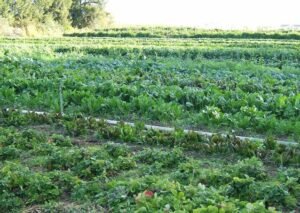
Organic farming is more economical and environment friendly as it reduces the sufferings caused due to harmful chemicals or pesticides, and is more nutritional as compared to inorganic products. Organic farming has a huge demand as it ensures safety of food and health with little investment producing high returns. It also incorporates more employment.
Need of Organic Farming
Organic farming is essential as it:
- Maintains the fertility of soil by using organic manures instead of chemical fertilizers
- Conserves ecosystem
- Inexpensive
- Huge Demand
- Promotes sustainable development
- Environment friendly
- High nutrient content
- Maximum profit
- Employment opportunity
Steps of Conversion to Organic Farm

Organic farming is not a traditional farming practice, so we need to know all the basic information about the crops and the farming practice. Also, we should practice it first in selected spots with such an organic practice which gives good results using only organic procedures. Along with this, we need to take guidance from some experienced officers which can be very helpful.
Keeping all this points in view, the conversion is divided into 3 major steps which are mentioned below:
- Collect Information
- Try the most promising practice on a small scale
- Implementation on the entire farm
We will discuss each step in detail.
Step 1: Collect Information
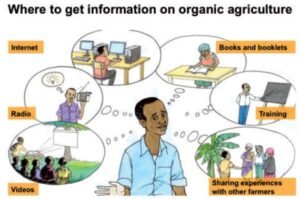
To make your Organic farming a successful practice, you need to have considerable knowledge about your farm and products, the management process of your farm, and the plantation or cultivation of your crops. In general many farmers do not practice organic farming so before converting to organic farming a proper plan should be made because it requires specific management of the soil, crop rotation, livestock and infrastructure.
The farmer who are willing to convert their farm should pay attention to:
- Farm appraisal with its resources and objectives
- Soil and farm management, crop rotation, livestock
- Labour requirements, infrastructure and equipments and proper marketing scheme
- Financial budget
- How to improve soil fertility
- How to keep crops and livestock healthy
- How to increase diversity in the farm
The farmers who are willing to practice Organic farming should take guidance from those who have already practiced this and learn from them so as to receive first hand experience of the local conditions and benefits or challenges related to it.

They can also learn through:
- Internet
- Radio
- Books & Booklets
- Training centres
- Video Tutorials
- Experienced Farmers
Step 2: Try the most promising practice in a small scale
This step is best implemented when the farmers get to know about the best organic practice along with the crops best suited for it.
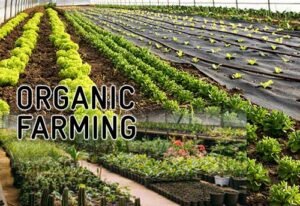
There is a risk of crop failure and loss of animals if organic farming is implemented at a sudden rate, so it is applied slowly on a small scale by selecting a specific organic practice at a time and is tested on specific plots or animals only, to minimize the risks and investment which would require less knowledge and labour.
Here we will get familiar with the organic practices and the best crops.
Some Organic practices to learn are briefed below:
- Mulching – It is the covering of soil with dead plants to control weeds.
- Intercropping – It is a process of growing two annual crops together. For example: a leguminous crop like beans with a cereal crop. It helps in maximizing the benefits from the land but requires proper knowledge.
- Composting – It is a process of sowing fast growing leguminous plants that ensures biomass production with some livestock for manure production on the farm. It has a major impact on crop growth and yields.
- Green Manuring – It is a process of growing leguminous plants to improve soil fertility, seasonally or in rotation with other crops.
- Organic Pest management – It is best achieved through ecological approach, choosing resistant varieties of crops, crop rotation, biological agents, physical barriers, modifying habitat so as to protect the plants from pests, insects or diseases.
- Using appropriate seeds & planting materials for crop production.
- Planting Leguminous trees to improve the growing conditions by providing shade, mulching and nitrogen fixation.
- Growing grasses and Leguminous fodder crops to enable organic feeding for the animals.
- Construction of Terraces and soil bunds for conservation of soil
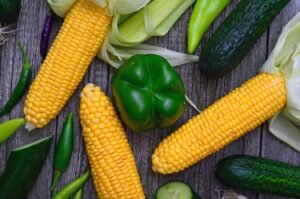
Best Crops to grow during Conversion
The farmers who are doing organic farming should not only focus on cultivation of certain specific crops but should choose the best crop which can be integrated into his farm and improve its productivity, for which he requires proper knowledge about the management of crops.
The farmers need to grow crops which can improve the fertility of the soil and select the crops with low risks of failure. They also need to grow pasture grass and legumes for livestock. The crops planted should be of a better quality which could match the soil and climatic conditions, and which can resist pests and diseases. For a diverse farming system, they should plant hedges. Also, they should plant such crops which can be easily transported to the market for selling to local or export markets.
Some crops best suited for Organic farming are mentioned below:
- Crops suitable for conversion with little investment and robust against pests and diseases – Cereals and Legumes such as Maize, Sorghum, Millet, Beans, Peas.
- High value short-term crops like Vegetables
- High value perennial crops like Fruit trees
- Leguminous green manures

Basically, a farmer should grow crops:
- which can feed his family
- which he can sell to the market
- which can provide high protein feed for livestock and can also be used as manures for soil
- which can provide shade, windbreak, firewood, feed, mulching materials
Step 3: Implementation on the Entire Farm
Organic farming is implemented on the entire farm only after gaining proper knowledge and sufficient experience with different organic practices. This step focuses on implementing the practice to the entire farm enabling the farmers to improve the production system and soil fertility, optimizing the balance between the production of fodder crops and livestock, and also encouraging interactions between all parts of the farming system so that they can take care of regulation of pests and diseases.
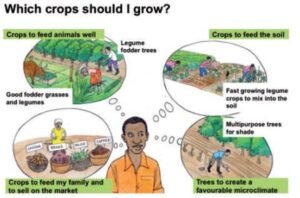
To implement it into the entire farm, the farmers need to minimize the risks of contamination for which they use organic pesticides in their farms and reduce the use of genetically modified organisms, which we discuss below.
Pesticides
Farmers need to safeguard his farm to avoid pesticide drifts from neighboring farms or due to the spraying of synthetic pesticides for which they need to follow some measures such as:
- Planting hedges around the boundary to avoid the risk of pesticides through wind or run-offs
- Divert the water away or work together with other farmers to minimize the water contamination and to avoid runoff from upstream fields.
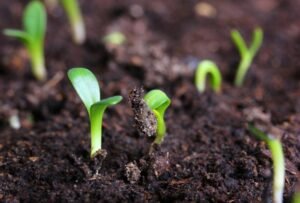
Genetically Modified Organisms (GMO)
GMOs are produced by transferring of isolated genes from plants, animals or microorganisms into the crops which increases the risks of GMO contamination and thus it is suggested not to use it in organic farming because it increases the risks of physical contamination too.
To reduce the risks of GMO contamination, proper management of the farm and practice of wide crop rotation is essential and the farmers are required to select organic seeds and avoid planting the same crop as his neighbor if he is growing GM crops. Also avoid using such machines which were used for GM crops and use such plots which are free of GM crop production and put safety (buffer) zones around the farm to reduce the risks of pollen dispersal of GM crops.

Conclusion
Organic farming is a farming practice where crops are allowed to grow at a normal and natural rate so that they can be less exposed to pests and diseases and can be grown naturally. These crops do not grow faster which often makes the farmers tense as they want to see quick results and they have to do so much to protect their crops from contamination and to grow healthy crops with better yields.
The farmers need to collect all the required information’s before converting their farms and properly manage the conversion period because organic farming is not suited to every farm and every crop, so it is required to learn about the best organic practices and crops that can be grown as it is very important to make the right decision at a right stage.


